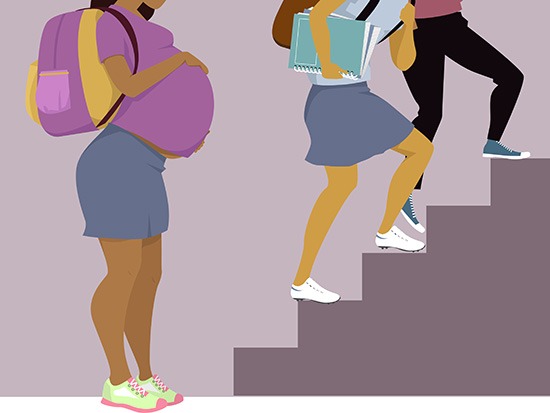Kenya continues to grapple with a deepening adolescent reproductive health challenge, as data from the Kenya Vital Statistics Report 2024 reveals that 125,019 live births, 11.3% of all registered births, were to mothers aged 19 and below.
This translates to more than one in every ten babies born in Kenya last year being delivered by a teenage mother, a stark reminder of how widespread early motherhood remains in the country.Of these adolescent births, 1,486 were to girls under the age of 15, while 123,533 were to those aged between 15 and 19.This high proportion of teenage registered live births highlights a growing public health and social challenge, as many of these young mothers face stigma, interrupted education, and economic hardship.
The teenage motherhood crisis is not uniform across the country. The regional disparities are stark: Narok (17.5%), Meru (17.4%), and Homabay (16.9%) recorded the highest proportions of teenage births, while Mandera (3.6%), Wajir (4.2%), and Garissa (5.7%) reported the lowest. These variations reflect underlying cultural, socio-economic, and infrastructural differences that influence adolescent reproductive health outcomes.
Behind the statistics lie complex and deeply entrenched drivers. Many adolescents still lack meaningful access to contraception, often deterred by stigma, limited youth-friendly services, or unsupportive health systems. Sexual education remains patchy, leaving many young people ill-equipped to make informed choices. In some regions, poverty and inequality force girls into transactional relationships or early marriages, while social norms continue to tolerate child marriage despite legal prohibitions.
The data indirectly highlights the role of education: while detailed figures for teenage mothers’ education levels are not provided, the broader statistics show that mothers with only primary education or none account for a significant share of births, while those with secondary or higher education are far less represented. This underscores how keeping girls in school remains one of the most powerful tools to break the cycle of teenage motherhood.
The scale of teenage pregnancy is not just a public health issue, it is a national development concern that threatens to derail the promise of the country’s youthful population. Early motherhood traps too many girls in cycles of poverty, exposes them to serious health risks, and robs them of the chance to contribute fully to the economy.
This calls for bold, multi-sectoral interventions: expanding adolescent-friendly reproductive health services, scaling up sexual education, challenging harmful cultural practices through community outreach, and creating safe, supportive schools that help girls stay in class.
Equally vital is investing in poverty reduction and family economic empowerment to ease the pressures that push girls into early unions or pregnancies. Addressing teenage pregnancy is no longer optional, it is essential if Kenya is to achieve inclusive growth and ensure that no girl is left behind in the nation’s journey of progress.
